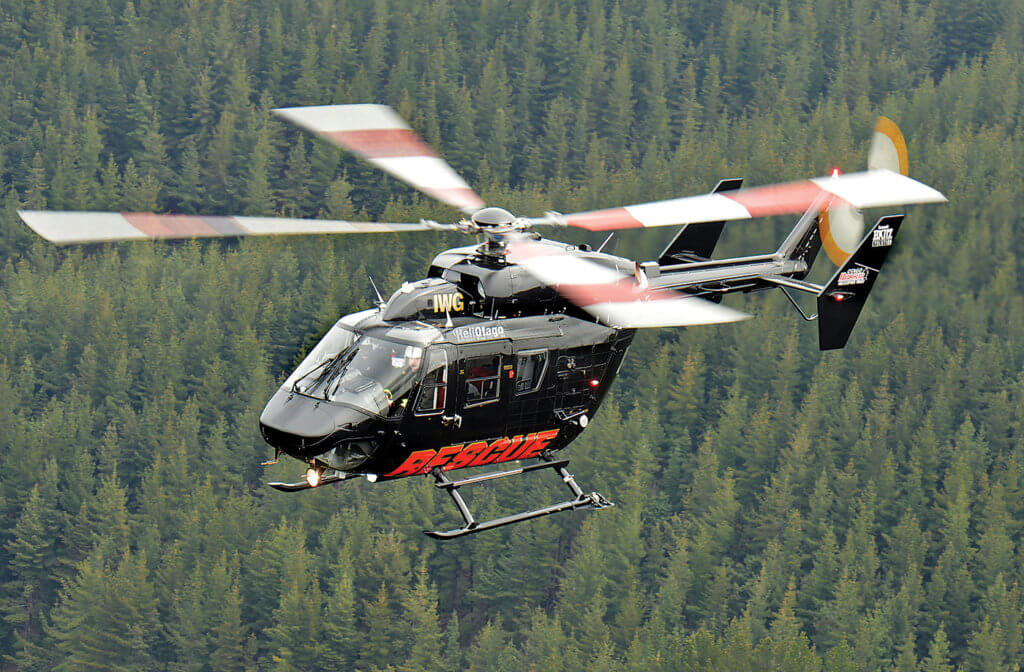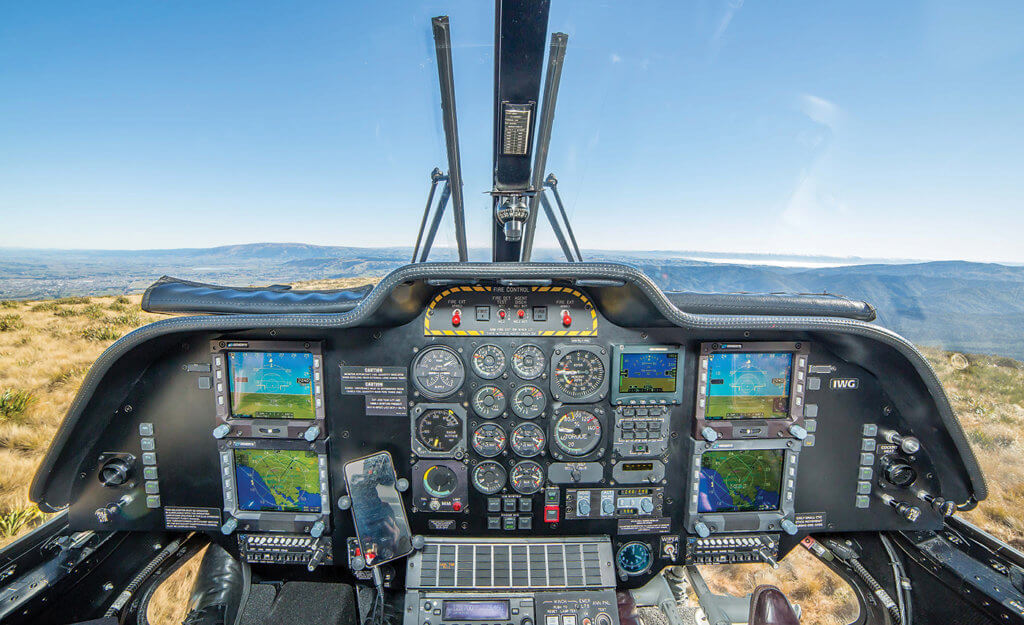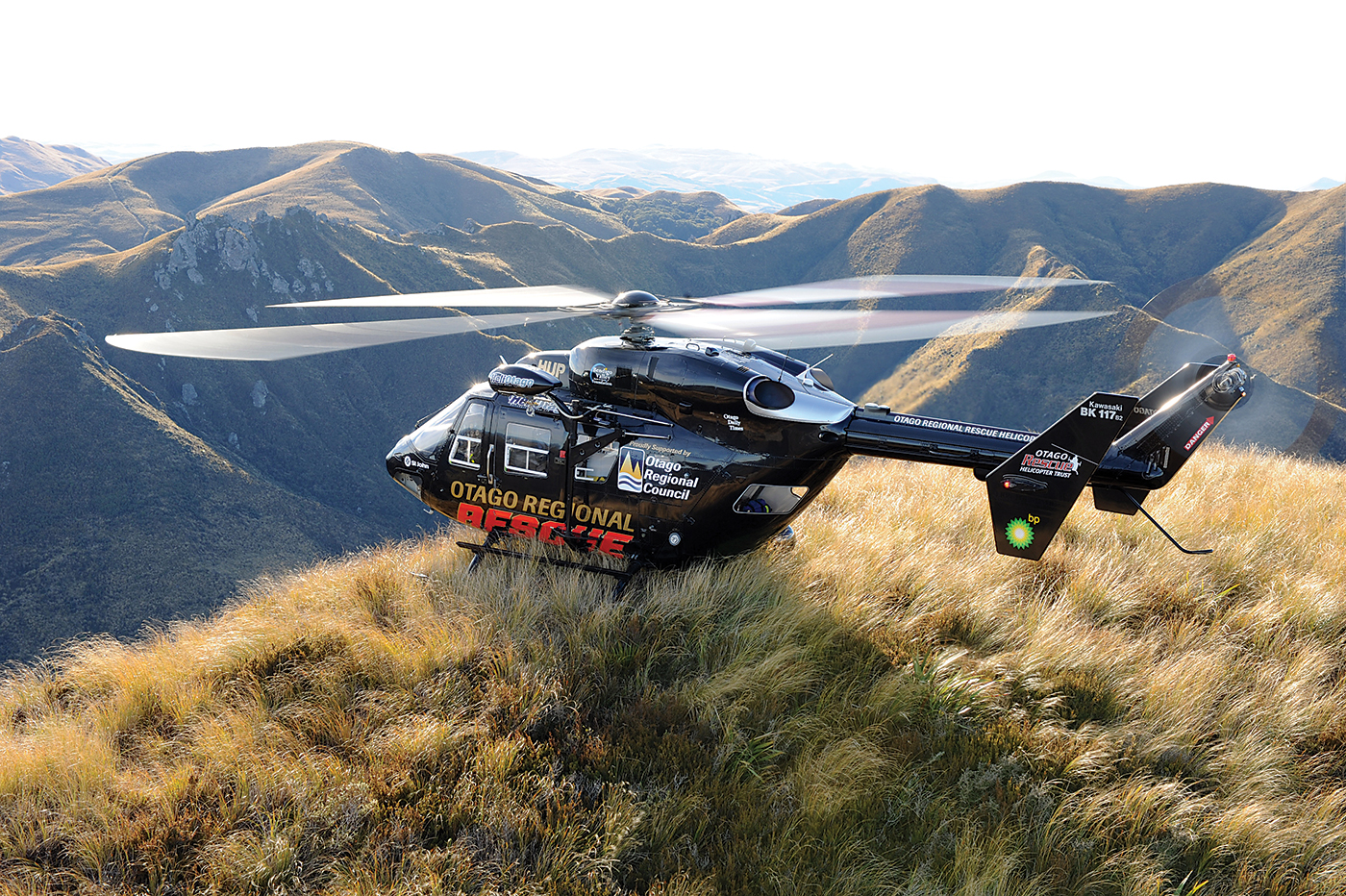The snow-capped fjords, glaciers, and mountains of New Zealand’s Otago and Southland regions are incredibly beautiful, but the cold, windy climate that makes them so eye-catching also generates extremely hazardous flying conditions both on- and off-shore. No one knows this better than the experienced people at Helicopters Otago. Based at the Taieri Airfield in Mosgiel, Helicopters Otago owns and operates the Otago Regional Rescue Helicopter (ORRH).
“We fly more than 600 missions annually in frequently hazardous conditions,” said Graeme Gale, Helicopter Otago’s owner and CEO. “Whether for bad weather rescues or hospital transports, ORRH is dedicated to doing our very best to save the lives of New Zealanders and anyone else in our EMS/rescue coverage area.”
 Being able to fly more types of emergency medical services (EMS) and rescue missions more safely is why Helicopters Otago recently tasked long-time supplier Airwork with upgrading two of its BK117 EMS helicopters to Airwork’s transformative BK117-850D2 Evolution platform, for which the company holds the only supplemental type certificate (STC).
Being able to fly more types of emergency medical services (EMS) and rescue missions more safely is why Helicopters Otago recently tasked long-time supplier Airwork with upgrading two of its BK117 EMS helicopters to Airwork’s transformative BK117-850D2 Evolution platform, for which the company holds the only supplemental type certificate (STC).
Incorporating cutting-edge features like a modern Genesys Aerosystems IDU 450 electronic flight instrumentation system (EFIS; a.k.a. full glass cockpit) and a pair of high performance Honeywell LTS101-850B-2 engines, the Airwork-developed BK117-850D2 Evolution upgrade can economically upgrade a legacy BK117 to the new Category A requirements while dramatically enhancing the performance, safety and capabilities of this trusted helicopter.
“The cost of completely upgrading a BK117 to the BK117-850D2 standard is about $3 million, compared to $10 million for a new, comparable helicopter,” said Stephen Green, Airwork’s
sales and aircraft trading manager. “For much less money, BK117 operators can have modern rotorcraft, using platforms that their pilots are already trained for, and that their maintenance shops are equipped to maintain.”
“With our two BK117-850D2s, ORRH’s crews can now work in all kinds of flying conditions, using IFR and night vision goggles as required,” said Gale. “Add the extra range and ceiling provided by the Honeywell LTS101-850B-2 engines and our Airwork external fuel tanks, and ORRH’s two BK117-850D2s are exceptionally more capable aircraft–able to save even more lives in more flying conditions.”
Central to ORRH’s expanded flight capabilities are the Genesys EFIS glass cockpits, the latest model of which–the IDU 450–has been installed in the second of ORRH’s upgraded BK117s (ZKIWG). The first BK117 has a slightly earlier Genesys EFIS.
As installed in ZKIWG (and awarded an STC by the Civil Aviation Authority of New Zealand, the Evolution’s Genesys IDU 450 glass cockpit comes with four high resolution colour displays, Genesys 3D synthetic vision with highway in the sky navigation system, geo-referenced hover vector, a helicopter terrain awareness system, night vision imaging system (NVIS) A and NVIS B night vision goggle compatibility, a flight management system, and GPS/NAV/COM .
Collectively, this package gives the BK117-850D2 full single-pilot instrument flight rules and NVG flying capabilities, making it into a true all-weather, day-or-night flying machine.
“We also installed a Genesys solid-state attitude/heading reference system (ADAHRS) in both BK117s,” said Grant Withers, Helicopters Otago’s chief pilot. “Moving to a highly-precise micro-electro-mechanical system allowed us to remove gyroscopes from the BK117s. This eliminated an ongoing maintenance issue with the aircraft. It also reduced weight, because the Genesys ADHARS only weighs less than 1.5 pounds.”
 Along with installing the Genesys IDU 450 and ADHARS in the ORRH’s two BK117s, Airwork renovated the aircrafts’ wiring harnesses as they replaced the original analog steam gauge avionics with modern digital systems. “Moving to the Evolution avionics platform allowed us to reduce about 100 kilograms in aircraft weight,” said Graeme Gale. “Think of it: Not only did we get superior-performing modern helicopters, but they are now light enough to carry an extra person if we need to.”
Along with installing the Genesys IDU 450 and ADHARS in the ORRH’s two BK117s, Airwork renovated the aircrafts’ wiring harnesses as they replaced the original analog steam gauge avionics with modern digital systems. “Moving to the Evolution avionics platform allowed us to reduce about 100 kilograms in aircraft weight,” said Graeme Gale. “Think of it: Not only did we get superior-performing modern helicopters, but they are now light enough to carry an extra person if we need to.”
At the same time, the Genesys glass cockpit’s advanced flight capabilities have substantially reduced pilot workload and mission stress in the cockpit. “With the ‘highway in the sky’ feature, our pilots can plan their flights before leaving and then ‘fly through the boxes’ on screen to stay safely on course,” said Withers. “This gives them more time to pay attention to what’s happening around the aircraft, resulting in enhanced situational awareness and more lead-time for decision-making in stressful situations.”
Factor in company-specific modifications (“Airwork can do all kinds of customer-requested mods,” said Green), and the ORRH ended up with the two highly flexible EMS helicopters they wanted, at a price they could afford.
“Money saved on moving to the BK117-850D2 is money that doesn’t have to be billed to our clients, resulting in more affordable rates,” said Gale. “Meanwhile, flying BK117-850D2s provides our pilots, medical technicians, and patients with a safer, more capable, and more powerful EMS/rescue platform. When lives are on the line, you want this kind of performance in your fleet.”
“Airwork prides itself on updating the superb BK117 helicopter ready for the 21st century,” said Stephen Green. “BK117 owners endorse our improvements. This is why an increasing number of BK117-850D2s are now flying missions around the world.”









